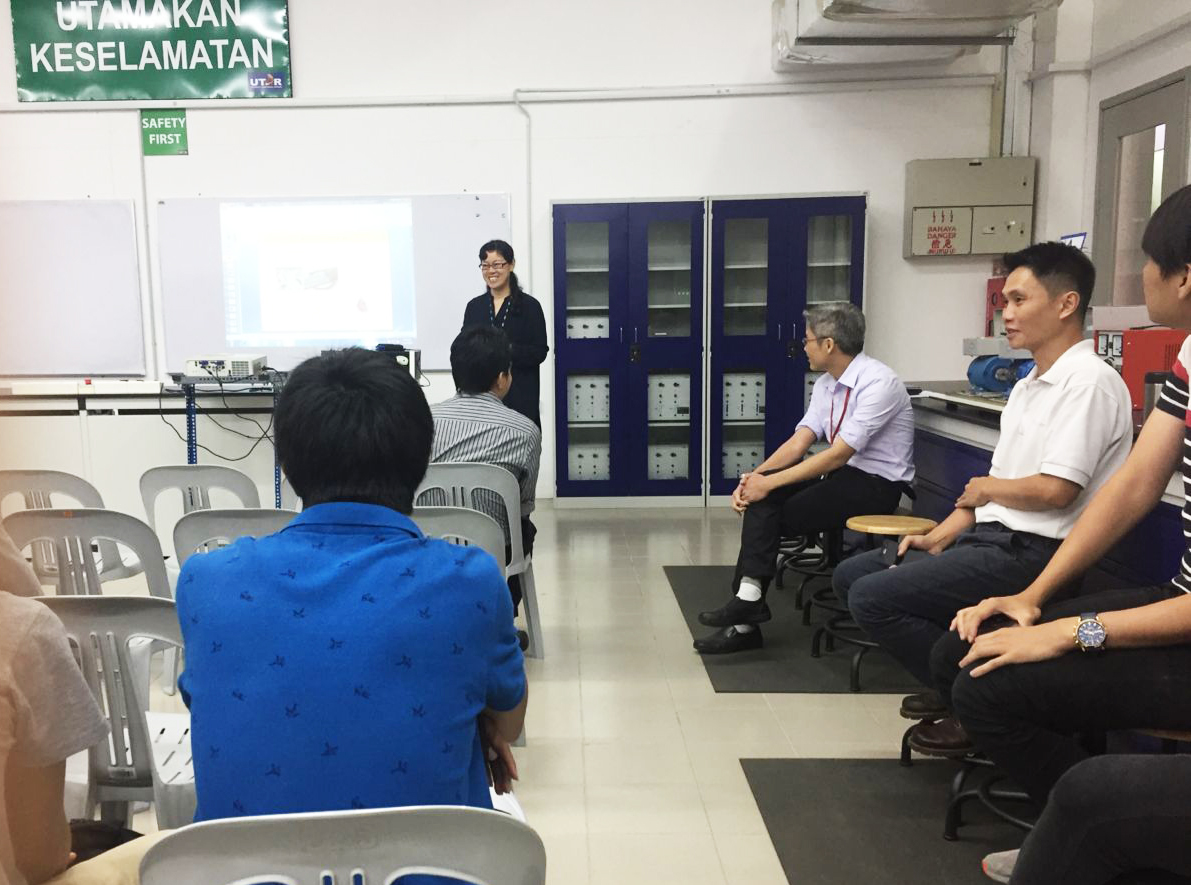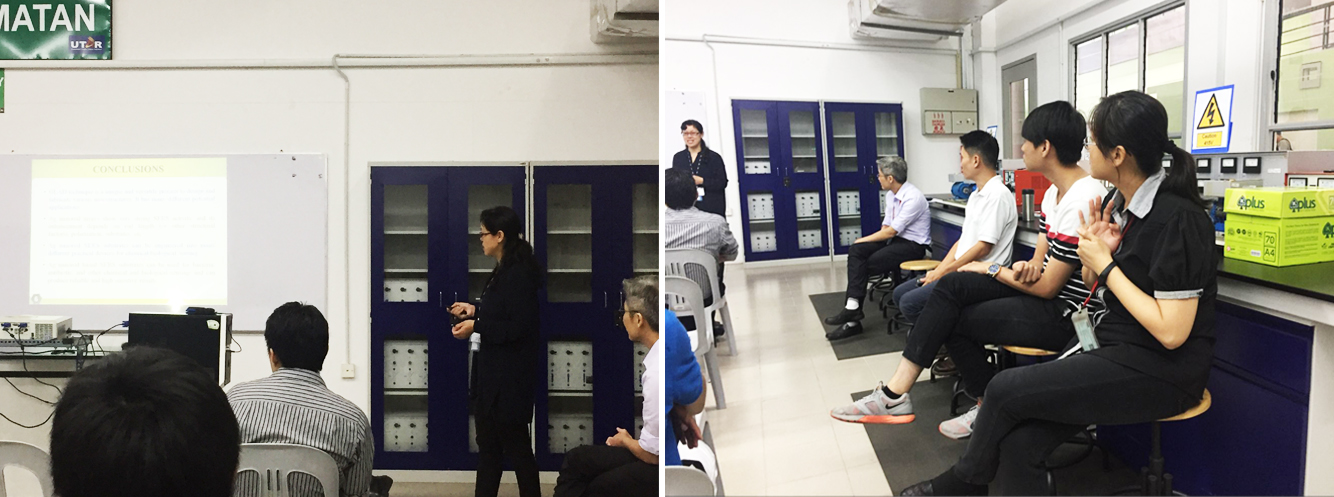

Dr Han explaining her research
UTAR staff and students greatly benefitted from the speaker, Assoc Prof Dr Caiqin Han when she shared her insights, experiences and expertise at the Faculty Seminar. The seminar was organised by the Faculty of Engineering and Green Technology (FEGT) on 14 March 2018 at the Kampar Campus. Dr Han is the Director of the Department of Optical Engineering in the Jiangsu Key Laboratory of Advanced Laser Materials and Devices in Jiangsu Normal University, Xuzhou, China.
With the participants exposed to the recent advances in the Engineering and Science field, the seminar aimed to instil an interest and excitement among the participants toward that field, as well as making learning more relevant to them. The seminar also provided a platform for researchers to discuss potential collaborative researches. It saw opportunities for them to present their work to the undergraduate and postgraduate students, thus enabling the students to understand better about the current on-going researchers in their faculty.
Dr Han presented her research titled “Physical Fabrication of Functional Nanostructures and SERS (Surface-enhanced Raman Spectroscopy) Sensor Application”, in which she and her research team conducted a comprehensive investigation on the physical origin of high enhancement factor, optimised the structures, designed different detection configurations and developed a large-scale production system. She began by explaining that the dynamic shadowing growth (DSG) is a simple nanofabrication technique used in physical vapour deposition with substrate manipulation and deposition source control. She explained that by programming the substrate rotation in the polar and/or azimuthal direction, they were able to design nanorod arrays with different geometric shapes.
She further elucidated that SERS is a molecule fingerprinting technology based on specific metallic nanostructured substrates and has been recognised as a highly sensitive detection technique for chemical and biological sensing and medical diagnostics. Although the application of SERS is not widely accepted, her research demonstrated that the aligned silver nanorod (AgNR) array substrate, engineered by the oblique angle deposition method, was capable of providing extremely high SERS enhancement factors.
With the optimised AgNR SERS substrates, her research showed that SERS was able to detect trace amount of virus, bacteria, microRNAs or other chemical and biological molecules for applications in the medical diagnostics, food safety and environmental pollutions. Specifically, Dr Han’s research has successfully proven that SERS is also applicable in distinguishing aflatoxin, detecting bacteria from food samples, determining antibiotic in water and soil.
Participants also understood that she and her research team are also developing SERS substrate combined with ultra-thin layer chromatography (UTLC) and handhold instrument, and we informed that the developments demonstrated AgNR based SERS technique could play an important role for future practical sensing applications.
Prior to Dr Han’s talk, FEGT lecturer Assoc Prof Ir Dr Yeap Kim Ho from the Department of Electronic Engineering also delivered a talk with his research titled “Antennas Design for Radio Telescopes, Wireless Power Transmission & Biomedical Telemetry”.
His talk gave an overview of the designs of antennas in the field of radio astronomy, wireless power transmission and biomedical telemetry. He shared with the participants about the applications of the antennas, the design process of these antennas as well as the research outcome that he and his team have achieved in the fields.
He explained that the development of antennas has enabled electromagnetic signals to be transmitted and received in free space. It is also applied widely in areas that are intertwined closely with the daily lives of mankind. He stressed that antennas play essential roles in enhancing society’s livelihood, whereby providing greater convenience and accessibility. Towards the end of the talk, Dr Yeap also offered suggestions on some of the potential areas worth exploring in the future.

Participants listening to Dr Han’s explanation
© 2019 UNIVERSITI TUNKU ABDUL RAHMAN DU012(A).
Wholly owned by UTAR Education Foundation Co. No. 578227-M LEGAL STATEMENT TERM OF USAGE PRIVACY NOTICE